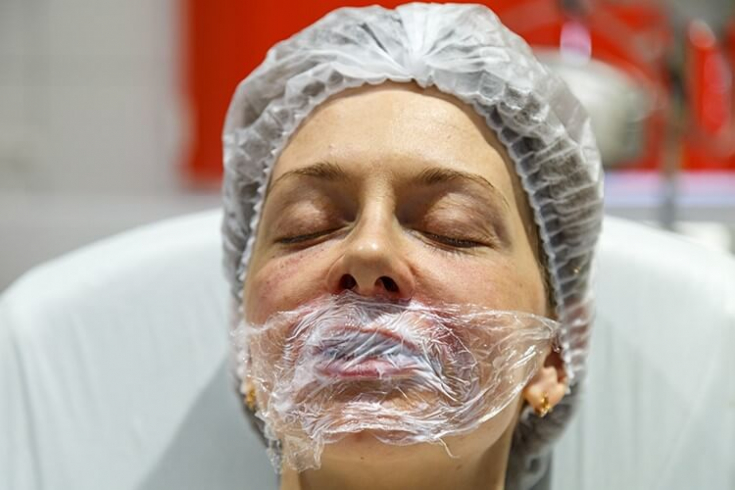Patient comfort during non-surgical treatment is paramount.
Pain during procedures can lead to increased doctor visits and the likelihood of further treatment without the fear and anxiety associated with injections.
There are many techniques using pharmacological and non-pharmacological methods to ensure patient comfort during non-surgical rejuvenation procedures.
The choice of technique is based on the experience, skills and knowledge of the clinician.
This article on estet-portal.com will focus on topical anesthesia available to the modern aesthetic medicine specialist.
- Why anesthesia is so important for aesthetic procedures
- Application anesthesia: mechanism of action
- What determines the effectiveness of topical anesthetic
- Modern application anestheticsand
Why anesthesia is so important for aesthetic procedures
Pain is defined as an unpleasant sensory and emotional experience associated with actual or potential tissue damage.
Skin nociceptors (skin nociceptors) activate two different types of nerve fibers:
1. Fast myelinated fibers carrying instant impulses of thrill;
2. C-fibers: slow unmyelinated fibers that carry impulses of dull pain.
Anesthetics work by blocking free nerve endings, thereby preventing the transmission of moreli.
A patient who does not feel pain and discomfort during aesthetic procedures is more likely to come back for a second treatment.
Beauty without pain: modern possibilities of cosmetology
Application anesthesia: mechanism of action
Tap anesthesia has a variety of uses to relieve pain, anxiety, and discomfort caused by the insertion of a local anesthetic needle prior to non-surgical procedures.
The three most common topical anesthetics are:
- 2.5% lidocaine / 2.5% prilocaine cream (EMLA);
- 4% tetracaine gel (Ametop);
- 4% liposomal lidocaine gel (LMX4).
All topical anesthetics have the same mechanism of action.
The anesthetic binds the sodium channels of free nerve endings and blocks the flow of sodium.
Sodium blockade inhibits nerve cell depolarization and prevents impulses from propagating along the nerve.
Nerve fibers are divided into three classes: myelinated somatic nerve fibers (A fibers), myelinated preganglionic autonomic fibers (B fibers) - not activated by skin pain receptors, and unmyelinated (C fibers).
Local anesthetics first block the conduction of myelin autonomic B-fibers by regulating vascular smooth muscle. They then block the C-fibers and finally the A-fibers, which respond to pain and temperatureru.
Read the most interesting articles in Telegram!
What determines the effectiveness of the topical anesthetic
The effectiveness of the topical anesthetic depends on its ability to penetrate the stratum corneum.
After passing through this superficial layer of the skin, it affects the nerve endings located in the dermis.
Factors affecting penetration of local anesthetics:
- thickness of the stratum corneum;
- skin acidity;
- apply time;
- concentration of active ingredients;
- type of delivery system, e.g. laser increases local anesthetic bioavailability, iontophoresis provides transdermal drug delivery using a voltage gradient;
- preliminary peeling of the skin to reduce the thickness of the stratum corneum (superficial peels or microdermabrasion);
- skin degreasing;
- occlusive dressing (e.g. Micropore and Tegaderm).

Although complications from topical anesthesia are rare, clinicians should be careful to use anesthetics only as directed, avoiding mucosal contact and using appropriate dosages.
How to choose local anesthetics for cosmetic procedures
Modern topical anesthetics
1. EMLA consists of two local anesthetics of the amide group: 2.5% lidocaine and 2.5% prilocaine.
Pain relief is achieved after 60 minutes of EMLA application, with initial blanching due to peripheral vasoconstriction and subsequent redness due to vasodilation.
The effect lasts up to 60 minutes. The depth of anesthesia depends on the time of contact with EMLA.
The anesthetic effect has been shown to reach a maximum depth of 3mm when applied for 60 minutes and 5mm when applied for 120 minutes.
2. Ametop – it is 4% tetracaine in lecithin gel base.
This is a long-acting ester anesthetic and has been shown to provide effective analgesia for four to six hours after 30-45 minutes of application.
However, the risk of allergic reactions when working with this anesthetic is quite high.
3. LMX4 – another widely used local anesthetic containing 4% lidocaine in a liposome delivery system.
Penetration of encapsulated lidocaine into the dermis prevents its degradation, thus providing a sustained release.
The LMX4 typically takes 30 minutes to operate effectively and its recommended usage is 60 minutes.
Pain prevention in aesthetic medicine is critical to a positive patient experience.
Patients should be informed of the types of anesthesia available prior to treatment.
Performing a painless correction will ensure a flow of patients and reduce their anxiety associated with injections.
Pain in cosmetology: the choice of safe and effective drugs







Add a comment